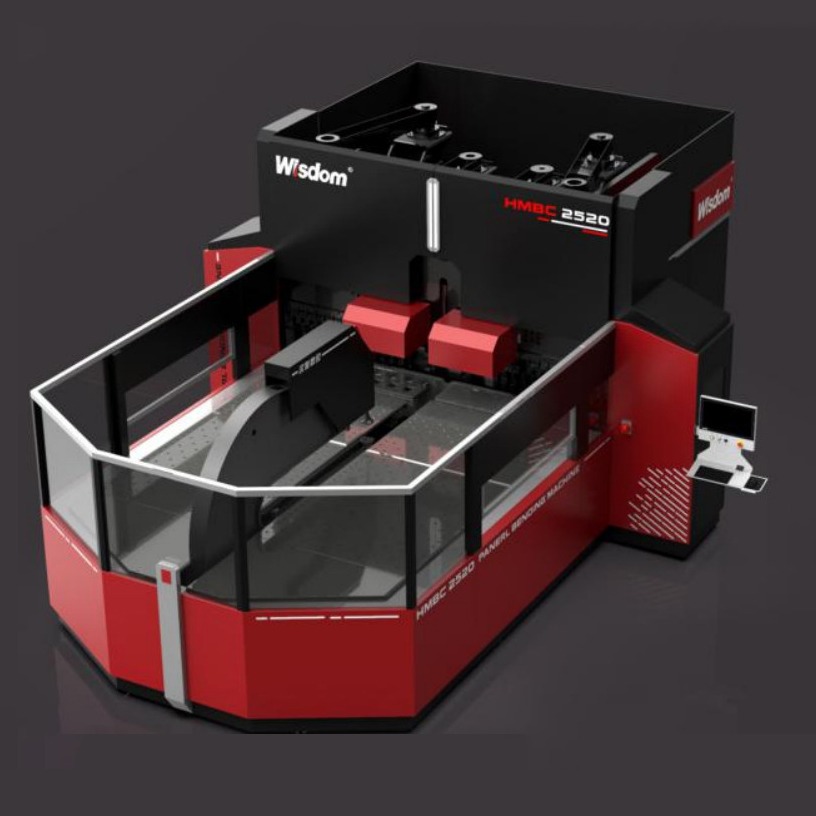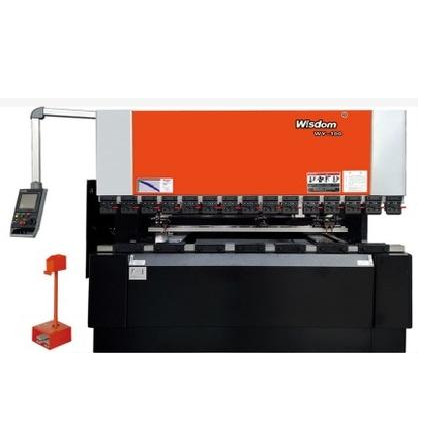The fischer group focuses on fully automated bending cells that usually comprise a tube magazine with weld seam detection, a separate internal lubrication function, a robot to load/unload the machine, and a conveyor belt or chute.
Automation, including pre- and postbending steps, has become one of the most important areas of investment in tube bending. In fact, fully automated bending cells have come to play a central role in fabricating operations of all sizes. Cnc Turret Manufacturer

Take fischer group, for one. Based in Achern-Fautenbach, on the edge of the German Black Forest, the maker and fabricator of ERW stainless steel tubes primarily serves the automotive exhaust systems market, with many Tier 1 automotive suppliers among its customers. When the company began in 1969, it mainly manufactured tubes and metal components. Then, in the 1980s, founder Hans Fischer purchased his first hand-loaded bending machine for tubes with a maximum OD of 2.5 in. when further processing of the tubes became more and more important.
Today, fischer’s 2,700 staff members process about 420 million ft. of tubing of per year—more than 176,000 tons of material across a range of sizes and shapes. The company runs about 75 Schwarze-Robitec tube bending machines worldwide as it tackles an ever-evolving array of challenges in the automotive industry.
Cars have changed dramatically over the past 30 years, and so have their components and subassemblies. Increasingly complex exhaust systems with larger diameters have required bend-in-bend systems in more demanding shapes, with short intermediate lengths and small radii.
Meanwhile, the auto industry has boomed. Production pressure has been on the rise this whole time, requiring automotive suppliers to constantly increase efficiency.
Since the early 2000s, fischer has added more and more fully automated tube bending systems to its mix of machinery to meet these demands. These days, it has about 50 automated cells in operation worldwide. Compared to hand-loaded machines, these cells are more productive because one person can operate multiple machines at once.
The cells typically comprise an all-around model in two different sizes: the fully electric, multistack CNC 80 E TB MR and CNC 100 E TB MR for tubes with diameters of 3 and 4 in. (80 and 100 mm), respectively. These machines can bend very small radii of up to 1xD. Of course, in relation to factors such as ovality and wall thinning, the details always depend on a combination of requirements and desired results. If, for example, the emphasis is on good results in terms of wall thinning, there will be a trade-off in terms of ovality.
They are controlled by the NxG machine control, which, in combination with the multilevel technology, can reduce intermediate lengths between two bends down to 0 in. This means that a subsequent bend can be realized on the machine directly after the first bend, without any gap in between.
Fischer has made automation central at its factories worldwide. At two of its plants—Waterloo (near Toronto), Ont., and Manchester, Tenn.—19 of the 20 tube bending machines in use are integrated into fully automated bending cells. Thomas Prell, vice president of the fischer group’s business in the U.S. and Canada, can tell you why.
“Automotive suppliers need to meet stringent tolerance requirements for components, subassemblies, and parts,” Prell said. “Each tube has to be exactly the same as the next one. One of the most important factors is ensuring a high degree of repeatability, together with a short cycle time, as the industry is focused on efficiency and speed.”
From its inception, fischer group has updated its machinery regularly, from this relatively simple machine in the 1980s to the fully automated cells of today.
New production requirements have arisen, and completely new manufacturing processes have emerged. Those processes may involve a simple interface with the next robot in the bending cell, or they can also encompass new, specially developed features for the fischer group such as internal tube lubrication within the magazine.
“Part of this natural development process has been the fact that we are moving further and further away from individual bending machines towards fully automated bending cells,” said Urs Kühni, sales manager at Schwarze-Robitec.
The typical layout of the Waterloo and Manchester plants’ bending cells starts with a tube magazine with weld seam detection. It helps ensure the tubes are positioned correctly each time they’re loaded into the bender. Then a lubricant film is applied to the inside of the tube while it is still in the magazine.
A robot integrated into the cell then feeds the tube into the machine and initiates the bending process. Once bending is complete, the robot removes the tube and places it onto a conveyor belt or chute, which then transports it away from the bending cell and onto the next processing step.
Depending on the local market requirements, many additional processes can be integrated into the bending cell besides loading/unloading. For example, tube ends can be expanded, cut, and calibrated after bending. Process optimizations like this often serve to further reduce cycle times.
As new auto industry requirements and standards are applied across all the markets that fischer serves, the company can swiftly roll them out to plants around the world because of the integrated nature of the cells across its plants. Schwarze-Robitec also can access all the machines and cells remotely for error analysis, maintenance, updates, and additional software configurations.
The NxG control system has proven adept at handling new iterations of designs and parts. During each bending sequence, even complex tasks, it monitors the interaction among axes as part of a fully automatic process and optimally coordinates their movements.
While a bend is being performed, the axes simultaneously prepare for the next step in the process. Depending on the component and tube geometry, the control system can improve production times by 20% to 40%.
While the automotive industry is traditionally known for large-scale production, it is also increasingly requiring smaller batch sizes, so tube bending companies need an ever-changing variety of tools. To respond to this, fischer group has incorporated a system in which all tools are completely compatible with each other and can also be used on all of its other CNC 100 and CNC 80 machines.
However, compatibility alone is not sufficient to meet the required turnover times, since it’s also imperative that the machines can be refit quickly and repeatably. Workers can easily add and remove tools without any additional aids; that increases repeatability and process security since the machine operator no longer has to configure the firmness of tension bars. Now a standard feature in fischer’s tube bending machines, the rapid tool-changing system was originally developed with the company’s requirements in mind. The same is true for a special wiper die mount that enables operators to return the wiper die to its position swiftly and precisely after tool changing.
With fischer’s integrated stock of bending machines, replacement, maintenance, and part storage are simplified. Sites receive the parts they need quickly, helping to reduce machine downtime, and replacement parts often are stored on-site.
See More by Marion Zickenheiner
Read more from this issue
Subscribe to The Tube & Pipe Journal
The Tube & Pipe Journal became the first magazine dedicated to serving the metal tube and pipe industry in 1990. Today, it remains the only North American publication devoted to this industry, and it has become the most trusted source of information for tube and pipe professionals.
Easily access valuable industry resources now with full access to the digital edition of The FABRICATOR.
Easily access valuable industry resources now with full access to the digital edition of The WELDER.
Easily access valuable industry resources now with full access to the digital edition of The Tube & Pipe Journal.
Easily access valuable industry resources now with full access to the digital edition of The Fabricator en Español.
Mitch Kraemer was working in the restaurant industry in Denver when friend and fabricator Tim Omspach approached him...
© 2023 FMA Communications, Inc. All rights reserved.

Bending Panel Factories Not yet registered? Sign up